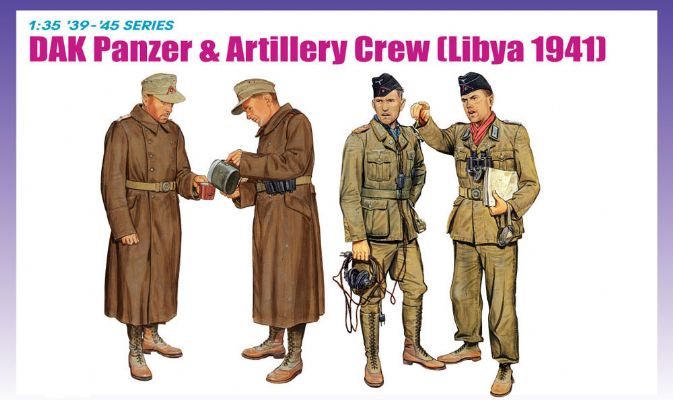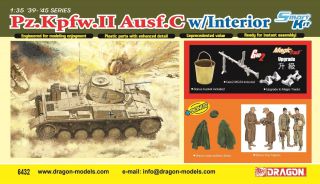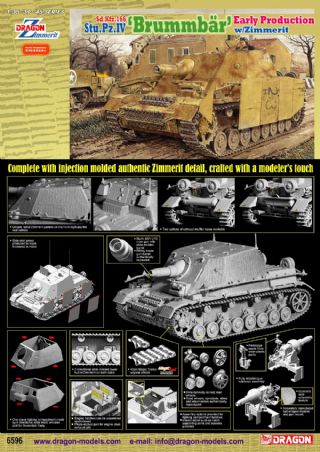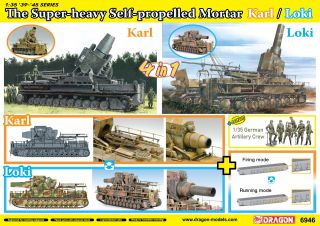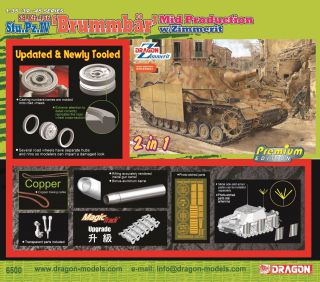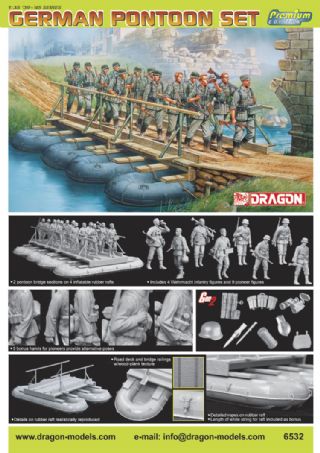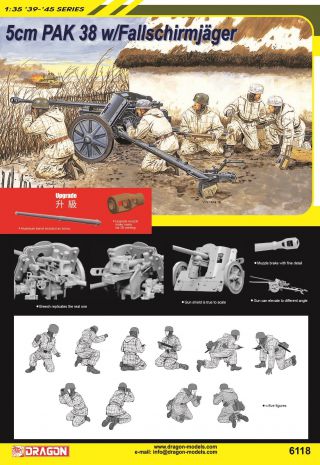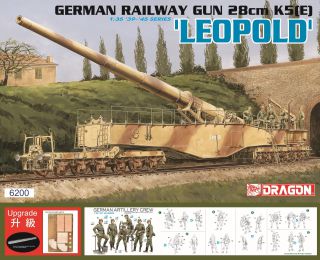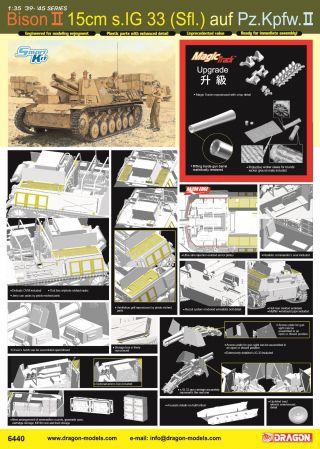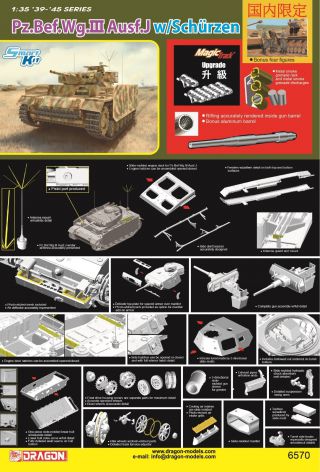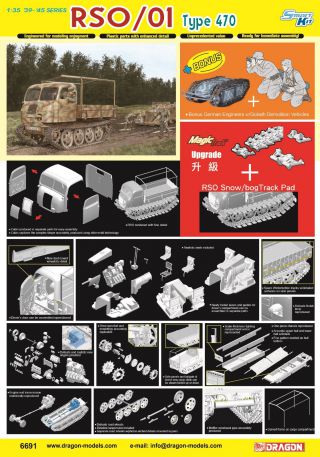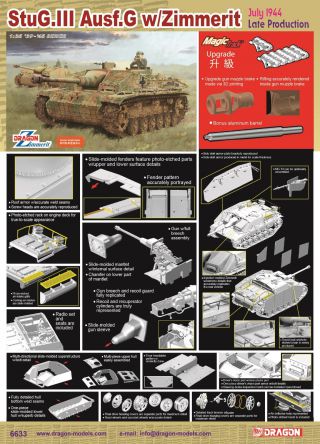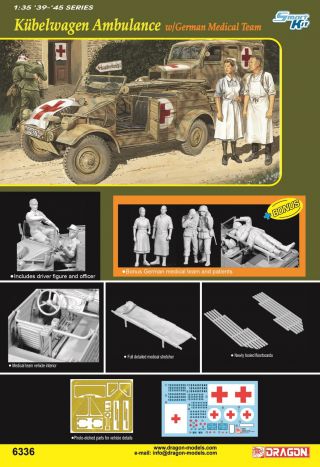HOME → Dragon Plastic Model Kits → 1/35 WWII Military → 6693

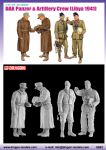
Barcode: 0 89195 86693 6
Case Pack: 48 Pieces Per Master Carton
Box Size: 6.4" x 10.2" x 1.5"
During WWII, the North African Campaign saw Allied and Axis momentum swing backwards and forwards across the desert sands of Libya, Tunisia and Egypt. After the heavy defeat of Italian troops, Germany dispatched its newly formed Deutsches Afrikakorps (DAK) to push back Allied forces in Operation Sonnenblume (“Sunflower”). The first expeditionary DAK troops arrived in Libya in February-March 1941, and they were quickly marshaled and sent into action by the legendary General Erwin Rommel. By mid-April he had successfully pushed the British out of Libya, except for the besieged enclave of Tobruk. In 1941, Rommel’s first offensive continued to push Allied units all the way back to the Egyptian border. Dragon’s latest 1/35 scale figure set features four DAK soldiers from this early period of the Desert War.
The set is broken down into two groupings – one pair of figures represents panzer crewmen while the remaining duo is part of an artillery crew. Modelers will immediately recognize the utility of this collection. The tankers in summer clothing can be matched with any of the DAK tanks in Dragon’s range (the Panzer III Ausf.H, for example), while the artillery crew would be a perfect match for Dragon's 15cm s.FH.18 howitzer. The four 1/35 German soldiers are sharply molded and their uniforms and personal equipment are accurately depicted. Notably, the artillerymen are warmly wrapped up in greatcoats for the chilly Libyan nights. As part of a desert diorama or vignette, these versatile DAK figures from Dragon are the ideal accessory.
Reviews:
DAK Panzer & Artillery Crew Libya 1941
Manufacturer: Dragon Models
Scale: 1/35
Material: Styrene & Photo-etch
Serial Number: 6693
Price: TBA
Introduction
The German Africa Corps or DAK was only formed on 11th January 1941, with Erwin
Rommel landing in North Africa the following month on St.Valentine's day. Despite
initial gains, it was a war of advance and retreat with the last remnants of
the DAK surrendering on 13th May 1943.
Kit Contents
The kit consists of three largish sprues of grey styrene and two very small
ones, plus a small photo-etched brass fret. The largest sprue contains parts
to assemble the four figures that are the subject of the kit, plus there's a
sprue of weapons, one of personal kit and the two small ones each with four
entrenching tools of two different types.
The moulding is as you would expect of Dragon in a modern kit, i.e. sharp detail
and no flash. Component breakdown is entirely conventional, in large part this
is probably due to the conventional poses of each of the four figures. Each
of the four torsos are entirely free from the fine cooling lines that have plagued
their figure sets for some time now. I sincerely hope they've found the cause
of this and finally managed to sure the problem. Well done Dragon!
Each of the four figures is posed standing. The set consists more of two pairs of figures than a quartet, most obviously indicated by the styles of dress each pair adopt. It's actually great to see a greatcoat on a DAK figure, since they were actually a lot more common in North Africa than is commonly appreciated, as a result of the freezing nights in that location. The first pair of figures then, are each wearing greatcoats, one in the act of receiving a drink in his canteen cup, from the open mess tin of the other. Each figure also wears a tropical field cap, and wears no other equipment other than one of them having a full set of Kar 98k ammunition pouches on his belt. One of the figures is wearing the web belt with the special round buckle for officers, and both of these figures are wearing high-laced tropical field boots, although neither of these two figures is wearing short trousers, a fact that will not be noticeable under the long greatcoats. Both figures are supplied with separate parts to represent the collars of the greatcoats for better detail, and both figures have their hands already moulded onto the ends of their arms. Both the canteen cup and mess tin bottom are supplied as separate parts, although the other half of each is not supplied. The lower half of each greatcoat is supplied in two halves for each of the figures, meaning that unless you're very careful, there will probably be a couple of joins that will need to be filled.
The other two figures are dressed in what is probably seen as typically tropical attire...again, moulding is conventional, although the figure holding the headset has his left hand supplied as a separate part and is also supplied with a set of goggles to place in that hand, which also rests on his hip. Both of these two figures are sculpted wearing the tropical field blouse, with the insignia from their temperate uniforms. There was a semi-official custom that Panzer crews could wear the Death's Head insignia from their black panzer jackets on their lapels, and the box art shows this on both of the figures, and they're moulded onto the parts too. Again, one of the figures is wearing a round buckle on his web belt, whilst the other has the enlisted rectangular buckle and is also wearing the high-laced tropical boots, whilst the other is wearing ankle boots. Both figures are wearing long trousers. The figure carrying the headset is supplied with a photo-etched headband and throat mike, of which four are supplied, so you'll have to throw into your spares box, although you'll have to supply your own wiring, and if you do so you'll either have to join it to the remnants of wiring moulded onto his tunic or for a much better appearance, remove the moulded elements and completely replace them with wire.
Conclusion
A superb addition to the range that will find itself being stockpiled in many
a collection! In addition there's a wealth of personal kit and weapons for the
spares box too! Recommended.
- Vinnie Branigan

